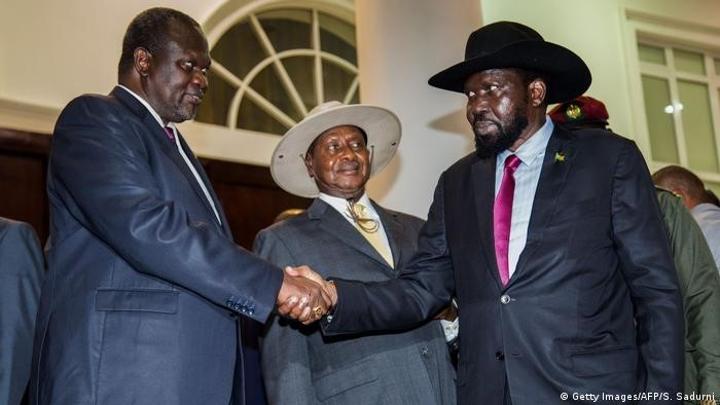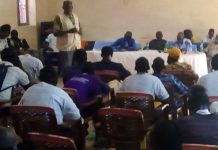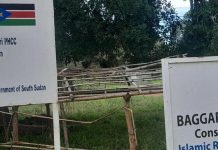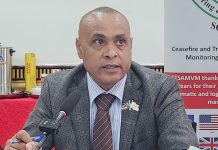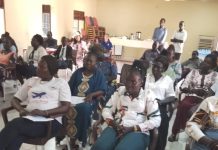Keji Janefer
Africa-Press – South-Sudan. The transitional government marks the fourth anniversary of the Revitalised Peace Agreement on the Resolution of Conflict in the Republic of South Sudan (RARCSS) with a mixed scorecard.
Since signing the peace agreement, the Revitalised Transitional Government of National Unity (RTGoNU) has achieved a significant milestone in the implementation of the peace agreement over two and a half years.
However, the pending tasks yet to be implemented command enormous importance, making it a do-or-die affair in the extended transitional period.
For the Reconstituted Joint Monitoring Evaluation Commission (RJMEC), two milestones stand out for the transitional government as the deal enters its fifth year.
In a press release issued on Sunday, RJMEC notes that the graduation of the first batch of the unified forces and the subsequent extension of the transitional period by two years are themselves an indication of the anticipated happy ending.
“As we mark the four years since the agreement’s signing, RJMEC urges the RTGoNU to redouble its efforts and implement the roadmap fully in letter and spirit,’’ the peace monitor notes, as it underpins the need to acknowledge the need for “protecting the political and civic space for all South Sudanese to participate in their governance.”
“RJMEC reminds the RTGoNU that the preamble of the Revitalised Peace Agreement talks of “laying the foundation for a united, peaceful and prosperous society based on justice, equality, respect for human rights and the rule of law, and this is truly a laudable goal which must apply to each and every citizen of South Sudan equally,’’ RJMEC further notes.
Pending tasks
To RJMEC, the recent graduation of forces is the much-needed achievement that should propel the beginning of the preparation for the next phase of the pass out parade.
“The roadmap makes it clear that much remains to be implemented across all chapters of the Peace Agreement, and we cannot ignore the fact that the need for this roadmap arose directly because of the slow pace of implementation of the Revitalized Peace Agreement.’’
According to RJMEC, the objectives of the roadmap were to evaluate the progress of implementing the peace agreement, determine whether elections could be held as early as December 22, 2022, or push for an alternative timeline for the parties to consider in the roadmap.
Apart from the unification and graduation of forces and setting up the legislature, there are other crucial tasks still remaining for the country to transition into the next phase of electoral dispensation.
For instance, 20 Articles and 283 Sub-Articles make up Chapter One of the Agreement, and due to the lengthy delays, only a majority of the 18 Articles have been ratified. According to the evaluation of the roadmap, three articles and two sub-articles are ongoing, while one article and two sub-articles have not yet been implemented.
There are five articles and 114 sub-articles in Chapter 2 (the Permanent Ceasefire and Transitional Security Arrangements). The collection of long-range and medium-range heavy weapons, the redeployment of the necessary unified forces, and the training of the second phase of the necessary unified forces are among the provisions that are still to be implemented during the five (5) transitional period activities.
Only two of the 29 activities listed in chapter three of the agreement—which deals with humanitarian assistance and reconstruction—have been carried out, with the remaining nine still unfinished.
Resource, economic, and financial management is covered in Chapter four’s sixteen articles and 145 activities. Only two activities have been finished, nine are in progress, and 57 are still unfinished.
The Transitional Justice, Accountability, Reconciliation, and Healing chapter is number five. President Salva Kiir announced the creation of the Commission for Truth, Reconciliation, and Healing at the beginning of the year, but the parliament has not yet approved its legal framework. Chapter 5 also discusses the ongoing formation of a hybrid court for South Sudan, which is entirely the African Union’s responsibility.
Six chapters make up the roadmap for carrying out the pending tasks of the revitalized peace accord. To finish chapter one of the agreement, 18 items must be implemented. The implementation of seven items is required for the chapter two on the graduation and redeployment of unified forces in 2022 and 2023.
Beyond elections, implementation of the 19 items in Chapter 3 began in March 2019 and will last until October 2025. There are 66 unfinished and ongoing items in Chapter 4. Implementation of 12 items is scheduled for 2022, followed by 52 in 2023, 1 in 2024, and 1 in 2025.
Meanwhile, chapter five has 18 tasks to be completed, and chapter six has 21 activities to be carried out, with two tasks to be finished in 2021, six in 2022, seven in 2023, and four in 2024.
Some of the pending tasks include the drafting of a permanent constitution, reconstituting the national electoral commission, coming up with electoral laws, second phase of graduation and deployment of the necessary unified forces, census, repatriation of internally displaced persons (IDPs) and refugees to their homes, and enactment of political parties Act remain.
For More News And Analysis About South-Sudan Follow Africa-Press

